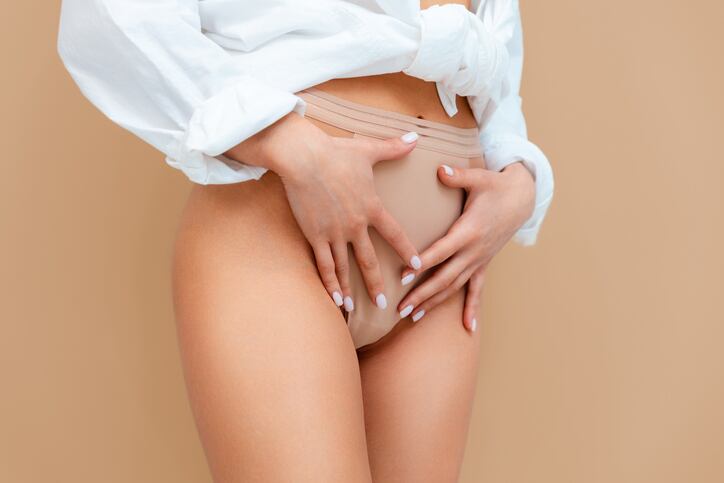Although overall beauty sales were up in 2022, a report from 1010Data claimed that online prestige beauty sales saw a 14% year-on-year decrease. The same report also stated that Macy’s and Target’s brick-and-mortar stores both saw an uptick in sales.
A similar picture was painted by Mintel’s consumer data in September 2022*, which revealed that 61% of beauty and personal care consumers shopped in-store at mass market retailers, compared to just 44% online. Drug stores and Grocery stores showed similarly large gaps between in-store and online shoppers. Amazon was the only exception to the rule, as 61% of shoppers had bought beauty products there online in the past 12 months.
This suggested that when there is an option of a brick-and-mortar store vs. an e-commerce store, more US beauty consumers are choosing the former to buy their products. Marisa Ortega, Retail & eCommerce Analyst at Mintel believed that an increased focus on what is ‘valuable’ has led consumers to look at aspects beyond price. “Moving forward, product efficiency, enhanced shopping experiences, and ethical practices will be key differentiators for brands and retailers,” she said.
Nail-painting robots
Indeed, most consumers don’t shop for beauty products in the same way they might for food, electronics, or any other category. There are expectations for beauty retail to be more interactive; to be fun-filled, offer try-on options, and be TikTok-worthy or Instagrammable. Brick-and-mortar beauty stores must feel more like a ‘destination’ or ‘experience’.
Colombe Bommolear, senior director for research and insights at Kantar believed shoppers had long looked forward to returning to in-store shopping and that the beauty shopping experience had also been improved by investment in AR and AI. “I would keep an eye on what was shown at the National Retail Federation show last week, and on Target and the efforts they are making, such as nail-painting robots in store,” she also said.
Here she referred to the six Target stores across the US that introduced a manicure treatment from an AI robot trained to paint fingernails. The service, from San Francisco-based startup Clockwork, costs $8 and takes around ten minutes.
The most interesting store in the world
One great example of an enhanced shopping experience was Brooklyn’s Showfields store. The self-proclaimed ‘Most interesting store in the world’ was laid out to look like rooms in a house, where it mixed beauty products with fashion, wellness, food and drink, and interiors. There was also a white box space for pop-ups and experiential activations.
Gussi, ILERA Apothecary, Flamingo, and Geologie were just some of the beauty brands stocked and it also had a Lush Cosmetics sensorial room that aimed to help visitors to disconnect from the world using light, sound, and scent.
“Instead of just showing products and telling their brand stories we are trying to show context,” explained Showfields CEO Tal Zvi Nathanel. “You have a journey through a house, each room featuring different products. It’s experiential with lots of moments where you can sample stuff.”
Mossy hills and mushrooms
The once digital-native brand Glossier had also realized this need for an extra-special experience when it launched its brick-and-mortar stores. It put great emphasis on product trial and each store is a fun-filled experience in itself. The LA store was adorned with giant products and signage and the Seattle store was decorated with mossy hills and mushrooms.
In an interview with Forbes, Kyle Leahy, CEO of Glossier, said: "Our stores are just one part of our omnichannel strategy, but they're incredibly important, both as a key element of our differentiated customer experience and a profitable growth channel for us."
Recently, Ulta Beauty introduced a new layout in 44 stores to help consumers better navigate its mass and prestige offerings, as well as draw more attention to the service it offered. Along with its in-store hair salons, it also launched beauty bars that offered brow and makeup services in partnership with MAC and Benefit.
The store-within-a-store model
Ulta had also previously launched a mini store within Target stores, offering a curated collection of over 50 skin, hair, and makeup brands, with Ulta-trained expert advisors to assist customers. The partnership had committed to launch within 800 stores over time.
JCPenney had also seen recent success with its similar store-within-a-store JC Penney Beauty venture, which offered over 170 beauty brands and virtual try-on technology. It planned to expand from its ten brick-and-mortar pilot stores into 600 stores by spring this year.
"We look through the lens of our consumer with an offering that covers mass, masstige and prestige beauty products," said Jo Osborne, Senior Executive GMM Beauty, JCPenney. "We are also continuing to evolve our Salons and most recently added Murad treatment services to a number of locations, which we will see extend to 150 by the end of 2023."
JCPenney’s once-digital-native partner, Thirteen Lune, was also included in these 600 JCPenney Beauty stores and had also planned to open a flagship store in Los Angeles.
Meanwhile, another online-only business, PROVEN, had also planned to launch its customized skincare offering in selected Sephora stores across the US this year. It had planned to feature interactive displays for customers to take the Skin Genome Quiz and learn about the benefits of personalized skincare routines.




